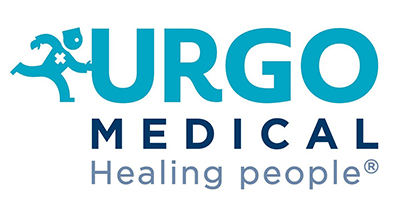Objective: To assess the efficacy, safety and acceptability of a new
silver poly absorbent dressing (UrgoCleanAg) in the local management
of exudative chronic wounds at risk of infection, with inflammatory
signs suggesting heavy bacterial load.
Method: This prospective, multicentre, non-comparative clinical trial
was conducted in French hospital wards (dermatology and vascular
medicine) or specialised private-practice physicians. Patients were
considered at high-risk of infection when presenting with at least three
of five selected inflammatory clinical signs, suggesting a heavy
bacterial load (pain between two dressing changes, erythema, oedema,
malodorous wound and presence of a heavy exudate). They were
treated for a maximum period of four weeks, and followed by the
physician on a weekly basis, including a clinical examination, area
tracings and photographs. The primary efficacy criterion of the trial was
the relative wound surface area reduction at the end of the four weeks
of treatment. Acceptability was documented by the nursing staff at
each dressing change between the weekly evaluations.
Results: We recruited 37 patients with chronic wounds. Wound
surface area, mostly covered by sloughy tissue, was reduced by 32.5%
at the end of the treatment (median value), while the clinical score
(maximum value of 5, based on inflammatory clinical signs) decreased
from 4.0 to 2.0. Effective debridement properties were documented
(62.5% relative reduction of sloughy tissue at week 4; 58.8% of
debrided wounds at week 4) and improvement of the periwound skin
status was noted (healthy for 28.6% of the patients at week 4 versus
2.7% at baseline). In addition, the tested wound dressing presented a
good safety profile associated to a high level of acceptability, noted by
both patients and nursing staff.
Conclusion: These clinical data support that the tested dressing is a
credible therapeutic alternative for the management of chronic
wounds at risk of infection with inflammatory signs suggesting heavy
bacterial load.
Declaration of interest: This study was sponsored by a grant from
the pharmaceutical company Laboratoires Urgo. S. Bohbot and Z.
Lemdjadi are employees of Laboratoires Urgo. L. Sigal has received
monetary compensation as a speaker for Laboratoires Urgo. Data
management and statistical analyses were conducted independently
by Altizem.
